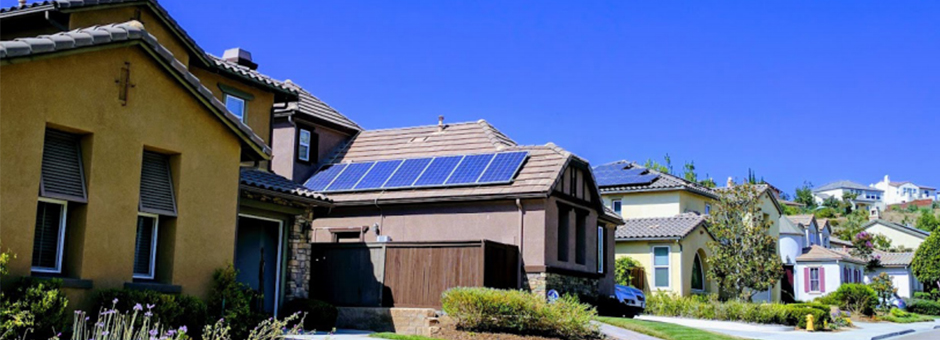
On February 14, 2018, the County of San Diego Board of Supervisors adopted a Climate Action Plan (CAP) designed to reduce greenhouse gas emissions in the unincorporated areas of the county to ensure a healthier and more sustainable future for generations to come. Although our eyes cannot see the millions of metric tons of greenhouse gases (GHGs) emitted every year in San Diego County, the effects of climate change are becoming increasingly more visible through changes in weather patterns, longer fire seasons, water supply limitations, natural hazards, sea-level rise and public health implications.
Unincorporated areas within the county are home to 26 distinct communities that vary from suburban densities adjacent to neighboring incorporated cities, to lower density rural communities surrounded by hillsides, deserts and agricultural lands. The development pattern of these communities is directly related to how emissions are generated in the county and what opportunities exist for GHG reductions. The challenge for the County was to develop specific actions that are measurable, achievable and enforceable, and that can be applied to the diverse communities of the unincorporated area.
Breaking new ground and setting ambitious targets while balancing environmental and economic concerns of residents and other stakeholders is not an easy task, especially as housing affordability continues to be a major concern and challenge in the region.
“There is no doubt we do have a difficult task before us,” noted Supervisor Dianne Jacob at the Board hearing. “It’s a balancing act between trying to provide affordable housing in this region, and also adding cost to that affordable housing.” Supervisor Jacob said she intended to seek “the best option in terms of what’s best for the people in this region, particularly our grandchildren and great grandchildren into the future.”
The Board adopted a CAP that seeks to strike this balance by limiting additional cost to new construction and instead focuses on developing strategic partnerships, leveraging existing programs and investing in projects that reduce emissions while providing the flexibility to accommodate emerging technologies.
The County’s Live Well San Diego vision provided inspiration and a strategic lens to view the CAP’s development as an opportunity to coordinate sustainability efforts across the County enterprise. The development and adoption of the CAP was a result of a collaborative effort built on input from a wide range of internal and external stakeholders, and represents a next-level commitment of County resources to address climate change.
The CAP strategies and measures establish an ambitious roadmap of programs, projects, new requirements and policy changes. Building on the County’s regional leadership in environmental stewardship and sustainability, the CAP sets new goals for ongoing efforts such as the Purchase of Agricultural Conservation Easements Program, tree planting and community plan updates, and establishes new initiatives such as the Renewable Energy Program, which sets a target of 90% renewable electricity by 2030 in the unincorporated areas of the county. The CAP also includes incentives for residents related to retiring older vehicles, water conservation tools and converting diesel agricultural equipment to electric.
Implementation of the CAP is currently underway. Annual monitoring and bi-annual GHG emissions inventory updates will track progress of implementation and related GHG reductions. The CAP is a starting point for addressing climate change; it is an adaptive plan that can be adjusted over time as technology and science improves to become more efficient and successful at reducing GHGs.
Check the CAP website for upcoming events and sign up for updates!